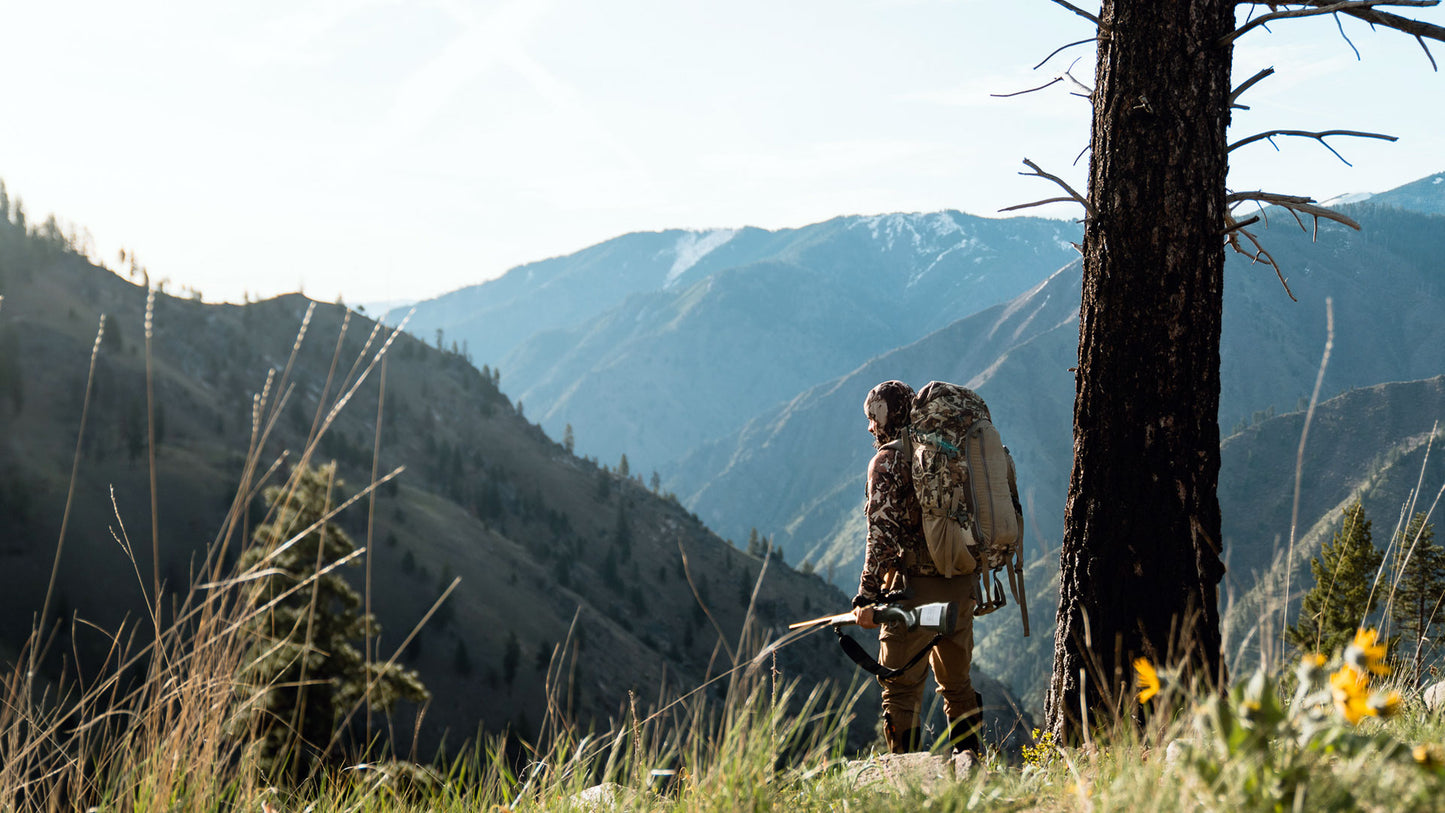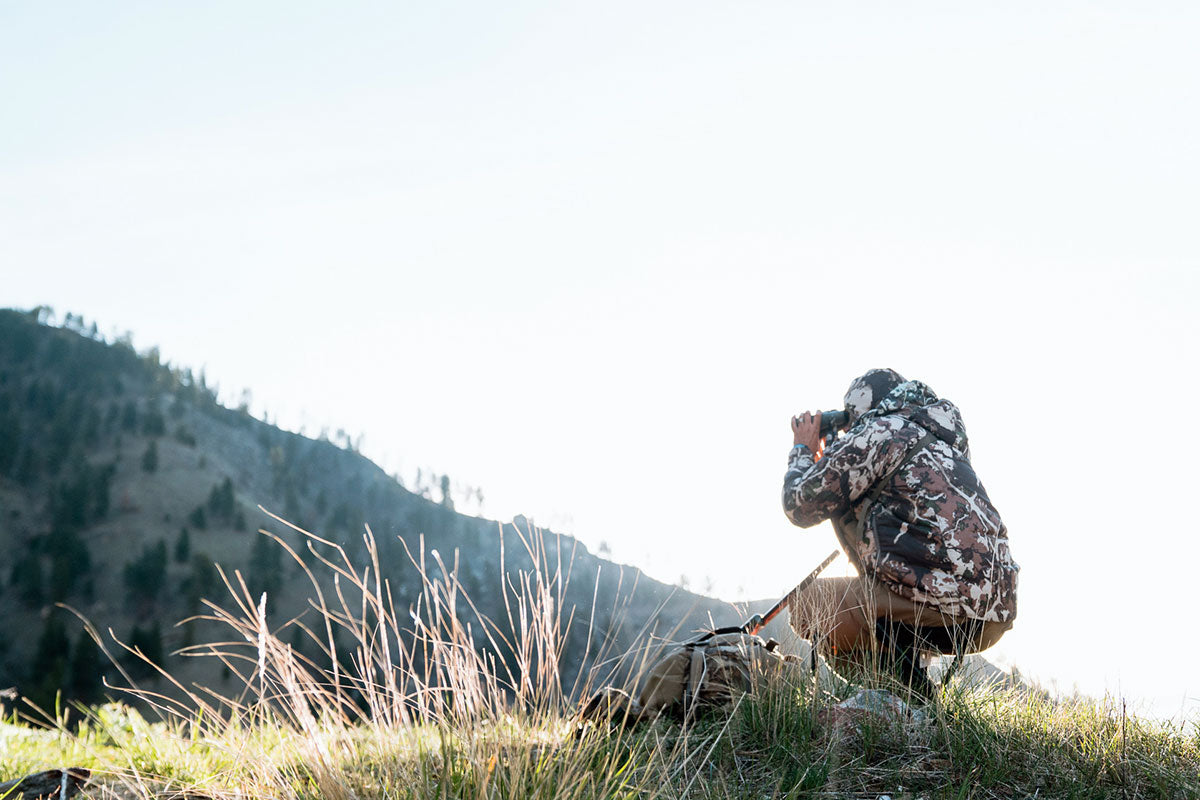
I recently returned from my very first Idaho spring bear hunt. This was a hunt that I shared my plans for previously and that I was looking forward to more than most, as I am a bear hunter through and through. In short, it was incredible. I spent 9 days solo bear hunting and backpacking through some of the most rugged country in the Lower 48. Bears were spotted, stalks were made, and shots were taken. However, no bears came home with me on this trip.
In the end, I just flat-out missed. A bummer to say the least, but a part of hunting. Not every bullet or arrow connects. While I didn't pack out a bear, I still walked out of that place with more than I went in. The lessons I learned throughout this hunt are sure to help me next year upon my return to the gem state.
Here's what I learned...
Tough Country Demands Tough Training
I am someone who tries to stay on top of their fitness throughout the year, not just for hunting, but for quality of life. Heading to Idaho, I knew that I’d be physically tested by some of the steepest and most gnarly country around. My main focus at home was legs, core, and endurance. While I was indeed able to get around ok in the Idaho backcountry, there were times where I felt that I could have prepared better. There were times when I felt that I shouldn’t be gassed, but I was. Now that I’ve been to Idaho bear country and know what it takes to hunt that terrain, you can bet that I’ll be ramping up my physical training quite a bit for next year.
Shooting A Rifle Isn't So Simple

As I mentioned in the introduction, I missed a shot at a bear on this trip. Not once, but twice actually. The first time, I misdialed my scope; the second miss was all on me and my nerves. I discovered that my blood gets pumping easily when I’m behind a rifle, in part because the shot opportunities seem to happen quicker. Whereas with a bow, I’m usually too worried about being sneaky, executing a stalk that takes time, and I don’t get as nervous throughout that process.
Really though, I think this comes down to my lack of time behind the gun. Trust me, I practiced before this hunt, but there is always room for improvement. I’m an archery hunter at heart, but I need to spend more time sending bullets downrange and create the same type of muscle memory with a rifle that I have with a bow.
The Snow Factor
In the preparation article I did for this hunt, I mentioned that I was going earlier in the season. That timing was completely premeditated, as I knew once I found a bear, I’d essentially be able to throw a blanket over him. They’re very predictable earlier on. What I didn’t consider enough was how much the snow would impact not only where the bears were, but also my own ability to move through the mountains. I actually got stuck in waist-deep snow on one stalk. For a desert rat, that was a new experience.

As far as where the bears were, it was fascinating for me to hunt this new landscape. Back home in Arizona, I never really deal with snow lines. In Idaho though, they 100% affect where bears are going to be early in the Spring bear season. Walking into the hunt, I figured the south-facing slopes were going to be where they’d be feeding. While those slopes looked nice, there was a good deal of snow above them, and I didn’t see anything on those hills for bears. Rather, I dropped off the backside of the ridge to look at the north face, and then I found the bears.
Bears tend to den on north faces and transition to the lush south faces for feed, but at this point in the season, the snow was keeping them from heading over from north faces to south faces. As the week went on and the snow melted, I watched how the bears slowly drifted up the north face and towards the top. That was fascinating to watch for the bear nerd in me.
Ticks Aren’t Everywhere. Sorta.
Before heading out on this hunt, I will admit, I was a bit freaked out about the tick situation. I’ve heard so many horror stories about them during the spring bear seasons and immediately went on a deep-dive binge for info on the matter — how to deal with them, chances of disease, how long do they have to be embedded to transmit diseases, etc.
The no-brainer first step in my tick prevention strategy was that I purchased a few bottles of permethrin and followed the directions to a T. All of my clothing was treated before heading out. Other than that, the only other things that sounded like a reasonable defense were just being aware, doing regular tick checks, and avoiding setting up my shelter in brushy areas where ticks might inhabit. Results at the end were surprising.

In the entire 9 days of my hunt, I encountered just one single tick. The tick was on the waist belt of my backpack. A few other folks I talked to during the hunt didn’t see any ticks at all. One hunter I crossed paths with said he saw two. This was both surprising and encouraging for me, allowing me to rest a bit easier at night. I know certain areas must be off the hook with ticks, but apparently, I got lucky with where I was.
Time Spent Moving Is Time Not Hunting

Another valuable lesson I learned came at the end of my trip, after realizing how much I was bouncing around from spot to spot. To be fair, I wanted to see some different areas in Idaho, but that didn’t bode well for my hunting. I spent two nights in the backcountry, then drove to another area and spent a few nights there, then drove back to the first area and spent my last 2 nights. A few nights in between were spent at either a trailhead or friend’s house. These were long drives that took up a ton of hunting time.
Next year, I plan on just going flat out 9 days right into an area and spending the necessary amount of time to really learn the spot. I now know for absolute certain that if I would have done that on this trip, I would have seen a lot more bears and likely had more opportunities at them.
Bringing These Lessons Together

Looking back on my time in Idaho, I’m left with a giant smile. It truly was a great hunt, despite the unfilled tags I still have. I learned a ton. That’s the point though right? To get out of your comfort zone and experience new things. One can’t expect to hit a home run on their first go. Bear hunting is some of the hardest hunting I do throughout the year. The amount of dedication it takes to be consistently successful stomps every other hunt into the dirt.
Bear seasons are different from year to year and a hunter needs to learn how to go with the flow. Be willing to throw a changeup, but don’t quit a spot too soon. With the knowledge I gained on this trip, I know I’ll be much more prepared for next year — both mentally and physically. Until then though, I’ll be left daydreaming about my return next spring.
Josh Kirchner is the author of the book, Becoming a Backpack Hunter, as well as the voice behind Dialed in Hunter, a blog that not only documents his own journey, but provides gear reviews, tips/tactics for western hunting, and encourages other hunters to chase and achieve their goals. Josh is a passionate bowhunter that has been hunting with his family since he was a small boy. When he is not chasing elk, deer, bear, and javelina through the diverse Arizona terrain, he is spending time with his wife, daughter, and two herding dogs.
